In redraft leagues in fantasy football, the players you’re typically drafting in Round 1 are blue chip assets who hold minimal risk (outside of injuries) and massive upside. In dynasty rookie drafts, that’s not really the case. Instead, drafters all too often conflate high risk with high upside, prioritizing players with a (projected) massive ceiling while ignoring their risks.
That makes some sense. Your dynasty team would be much better off with one player like JuJu Smith-Schuster (immediately sliding into your starting lineup) than three players like Mohamed Sanu (sitting on your bench outside of bye weeks). However, we’re also notoriously bad at projecting upside — Smith-Schuster was one of those players who (before he ever stepped on the NFL field) was regarded as a player without a ceiling.
In this article, I wanted to explore some first-round dynasty assets who are actually high-risk/high-reward types and let you decide for yourself whether they are worth the risk.
You can also refer to our rankings here, to see where we recommend taking each of the following five players.
Josh Jacobs, RB, Alabama
(Dynasty rookie ADP: 1.05)
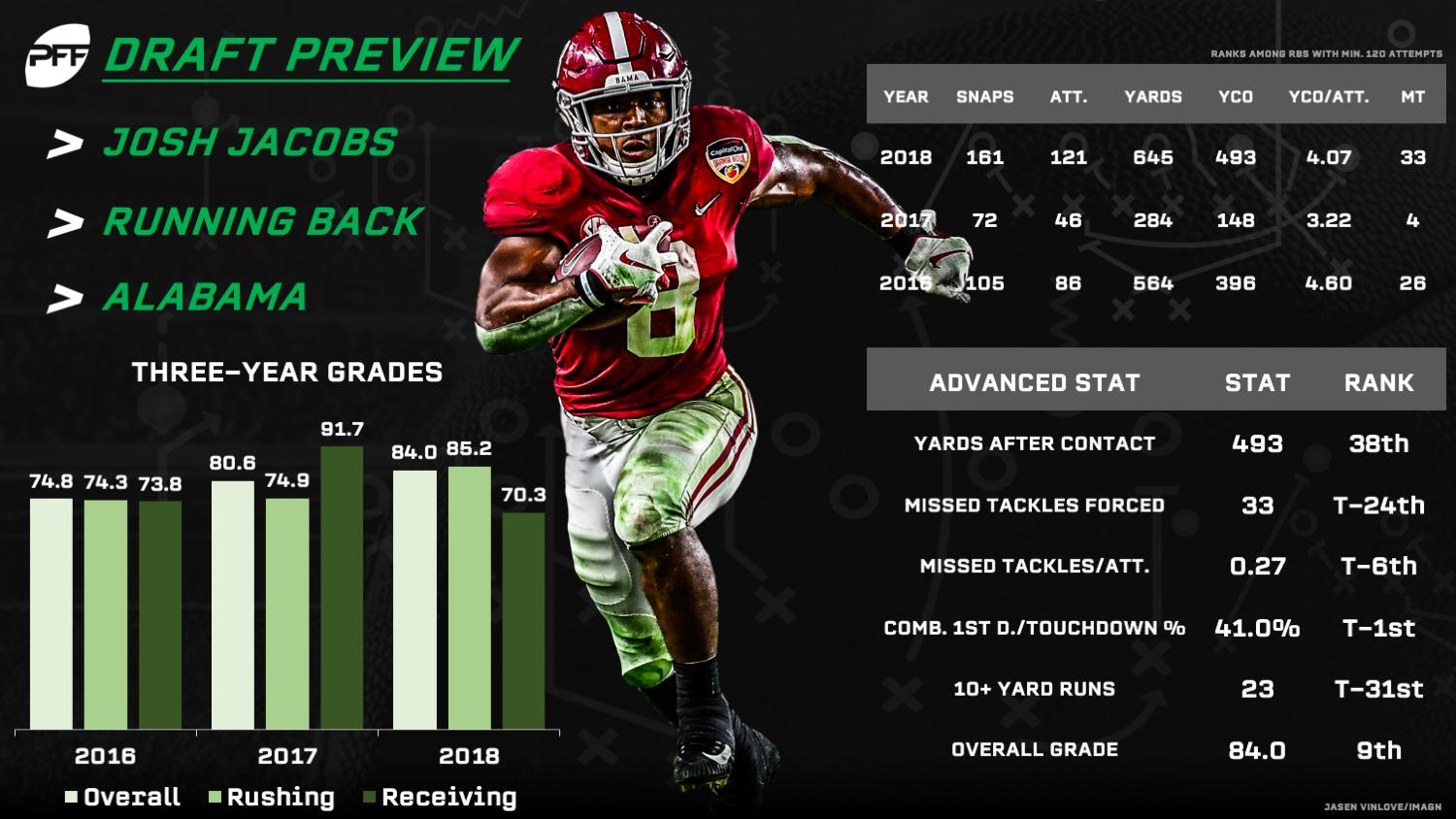
The good
- Jacobs was the only running back invited to the draft, implying he’s likely to be drafted on Day 1, or at least as the first running back off the board. Like with all other positions, draft capital is the best predictor for future fantasy success.
- Jacobs has immediate bell-cow upside, proving to be our most efficient running back as a runner in short yardage situations and as a receiver. 41.0% of Jacobs’ carries resulted in either a first down or a touchdown in 2018, the highest rate in the country. He leads all combine-invite running backs in this class in career yards per target (10.4) and yards per route run (2.06).
The bad
- Although the consensus is Jacobs is deserving of a Day 1 pick, there hasn’t been a single running back selected in Round 1 (since 2000) who hasn’t had at least one season with 1,000-plus yards from scrimmage in college. Jacobs has totaled 723, 452, and 887 yards from scrimmage over the past three seasons.
- Despite ranking well in a number of efficiency metrics, it’s concerning Jacobs couldn’t even beat out fellow running back Damien Harris (also in this class) for touches. Harris averaged more receptions per game than Jacobs last year and more carries per game in each of the past three seasons. If Nick Saban (apparently) preferred Williams to Jacobs, why should we think NFL teams won’t feel the same way?
- Jacobs was atrocious as a pass-blocker over the past two seasons, something that will often limit playing time early in a running back’s career.
DK Metcalf, WR, Mississippi
(1.02)
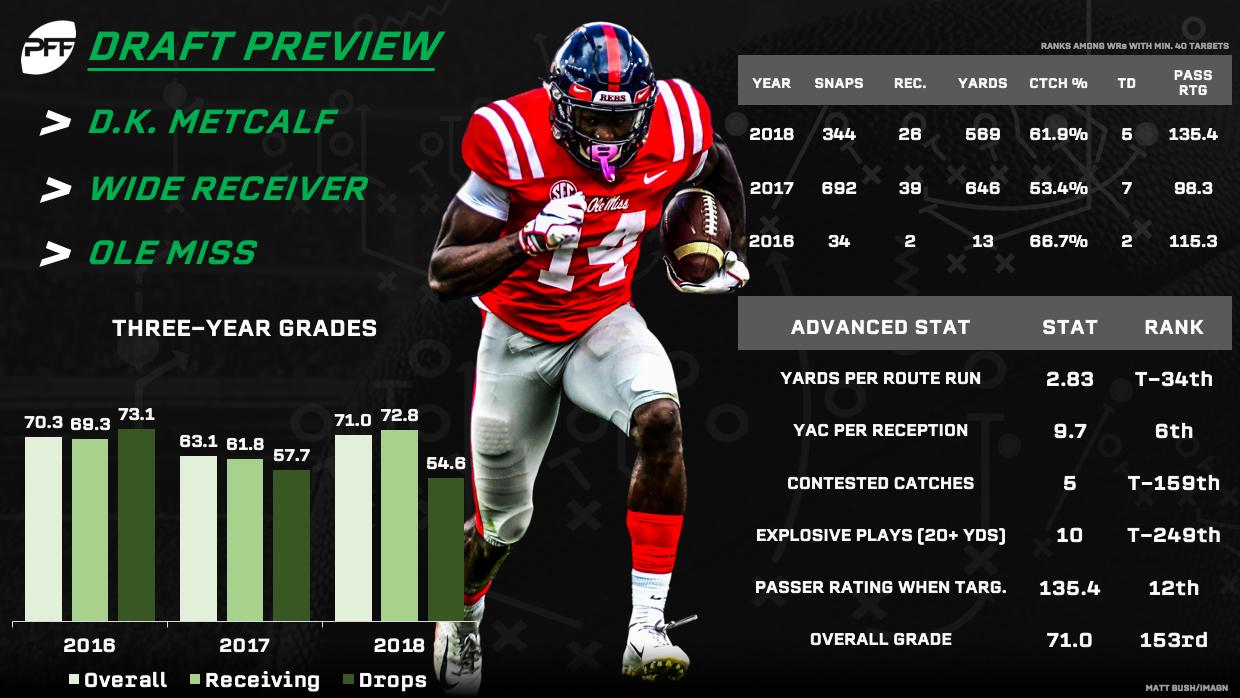
The good
- Metcalf was one of only two wide receivers invited to the draft.
- At the combine, D.K. Metcalf ran a 4.33-second 40-yard dash at 228 pounds. Among all wide receivers invited to the combine since 2004, his speed score of 129.7 ranks second-best, behind only Calvin Johnson (133.5) and just ahead of Julio Jones (124.0).
The bad
- Although Metcalf excelled when running in a straight line at the combine, he struggled with the agility drills. His three-cone (7.38) and short-shuttle times (4.50) rank much worse than average compared to all drafted wide receivers since 2000 (6.93 and 4.19, respectively). Of 561 qualifying wide receivers, his agility score (three-cone plus short-shuttle) ranks 16th-worst since 2000.
- Based on Metcalf’s results in these events, one might wonder if Metcalf projects as something of a one-trick pony at the NFL level. He can use his straight-line speed to effectiveness on go-routes, but his lack of agility might hurt him on the more technical routes. Indeed, over the past two seasons in college, a whopping 71% of Metcalf's yards have come on just two routes (the go-route or hitch).
- Like with Jacobs, if Metcalf is considered to be Ole Miss’ top wide receiver prospect, why was he out-targeted and out-produced by teammate A.J. Brown? Over the past two seasons, Brown averaged 8.8 targets and 106.7 yards per game to Metcalf's 6.1 and 63.9, respectively. Unlike Brown, Metcalf also didn’t really stand out in many of our efficiency metrics or grades.
Marquise Brown, WR, Oklahoma
(1.09)
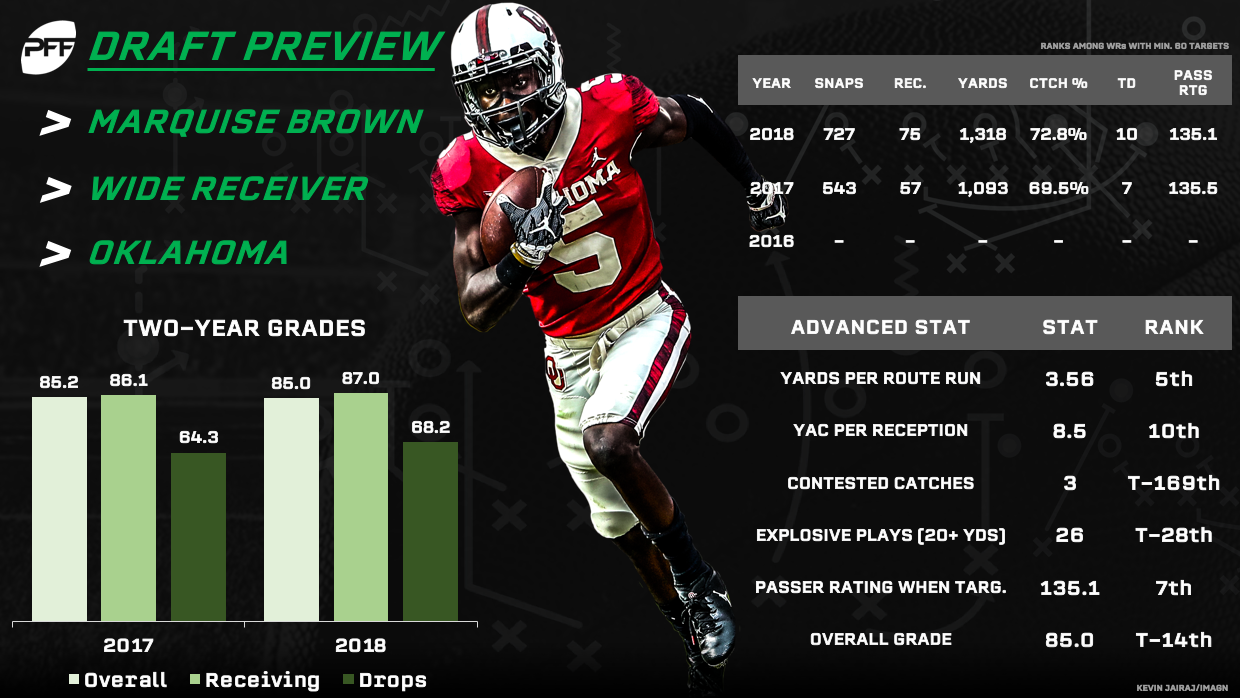
The good
- Brown was one of only two wide receivers invited to the draft.
- Whether by yards per route run, depth-adjusted yards per target, or a number of other metrics, Brown’s numbers are among the best we’ve ever recorded.
The bad
- Brown weighed in at 166 pounds at the combine. The NFL has not been kindto wide receivers below 170 pounds. Since 2000, Taylor Gabriel (2,507 yards) is the only sub-170-pound receiver to total at least 2,000 career receiving yards.
- Brown suffered a Lisfranc injury (an especially devastating injury for skill-position players) several months ago, which ultimately held him out of the Combine.
Noah Fant, TE, Iowa
(1.05)
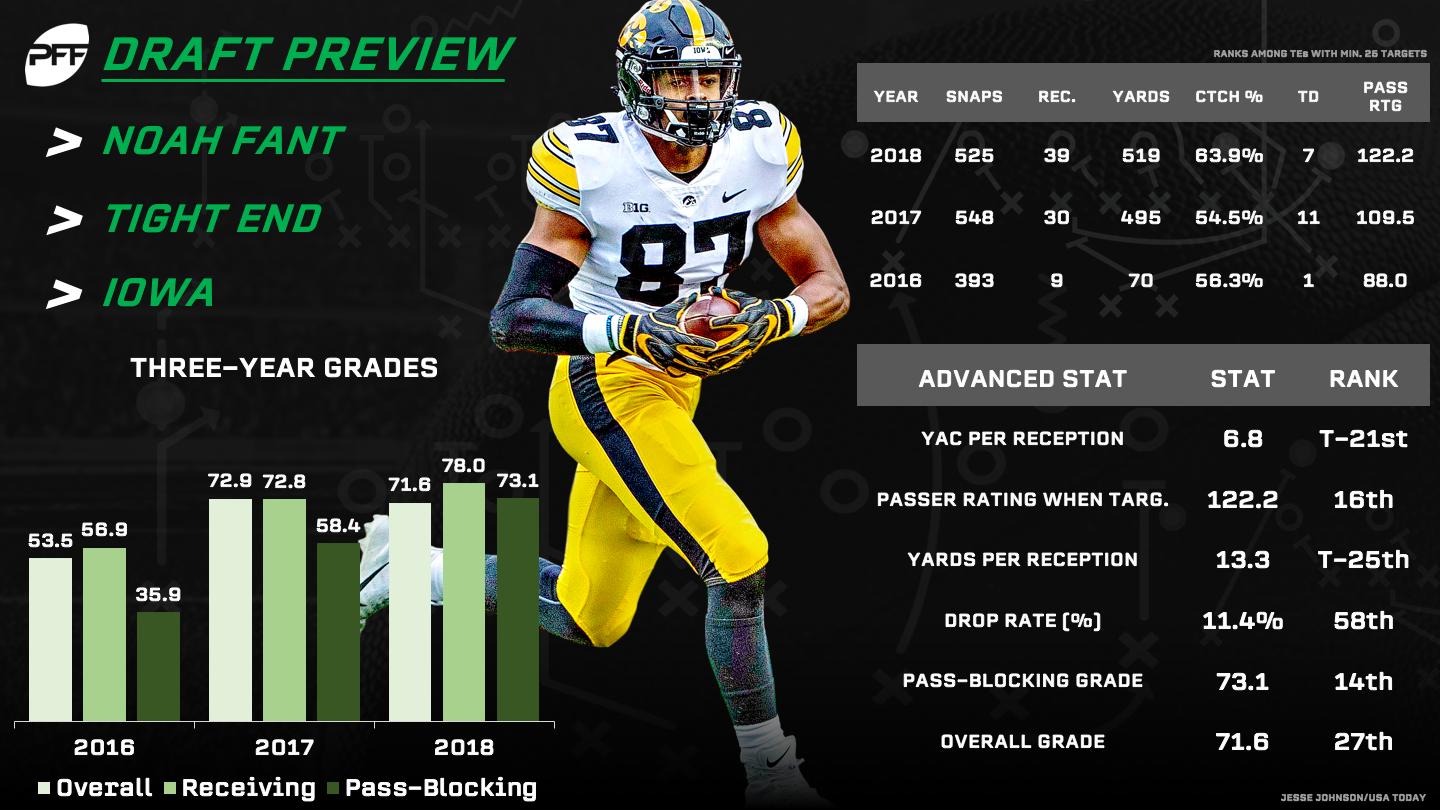
The good
- Fant was one of only two tight ends invited to the draft.
- Fant was only asked to pass block on 41 snaps over the past two seasons. NFL teams know that this is not his strength and it’s unlikely the team that drafts him will use him in this capacity. (You don’t earn fantasy points from blocking, but you do earn fantasy points from what you can do is a receiver, and you are on the field more often if you can pass block.)
- Fant is an athletic freak. He led the class in the 40-yard dash (4.50), the vertical jump (39.5”), the broad jump (127”), and the three-cone (6.81). Not only were these numbers best in the class, but they were also historically great. His 40 time ranks 10th-best of 344 tight ends to participate at the combine since 2000. Fant’s vertical jump also ranks sixth-best of 276 and his broad jump ranks 12th-best of 270. His three-cone ranks fifth-best of 239 qualifiers and gives him (in conjunction with his short shuttle time) the 15th-best agility score of 235 tight ends since 2000.
- Among all combine-invite tight ends over the past two seasons, Fant ranks fourth in receiving yards (1,014), third in yards after the catch (445), first in touchdowns (18, eight more than next-closest), and first in fantasy points scored.
The bad
- Throughout his college career, Fant averaged one drop every 7.0 catchable targets. Fellow tight end and Iowa teammate T.J. Hockenson averaged one drop every 37.5 catchable targets. Over the past six NFL seasons, there are only two instances of a tight end drawing more than 50 targets and recording a worse drop rate than Fant’s.
Bryce Love, RB, Stanford
(2.06)

The good
- Unlike with the other players we’ve already discussed, Love’s risk is baked into his ADP (2.06, RB6).
- Love rushed for 2,118 yards in 2017 — the 10th-most since 2000 — joining a list that includes Melvin Gordon, Derrick Henry, LaDanian Tomlinson, and Matt Forte. That season he averaged 4.28 yards after contact per attempt, which ranks sixth-best since 2014.
The bad
- Love struggled greatly in 2018 by any number of efficiency metrics (granted, he dealt with an ankle injury for almost the entirety of the season) before suffering a season-ending ACL injury that held him out of the combine and will likely keep him out of some portion of training camp.
- While granting that Stanford used Christian McCaffrey as a do-it-all bell cow, it’s concerning that Love totaled only 34 receptions (to 540 carries) over the past three seasons.
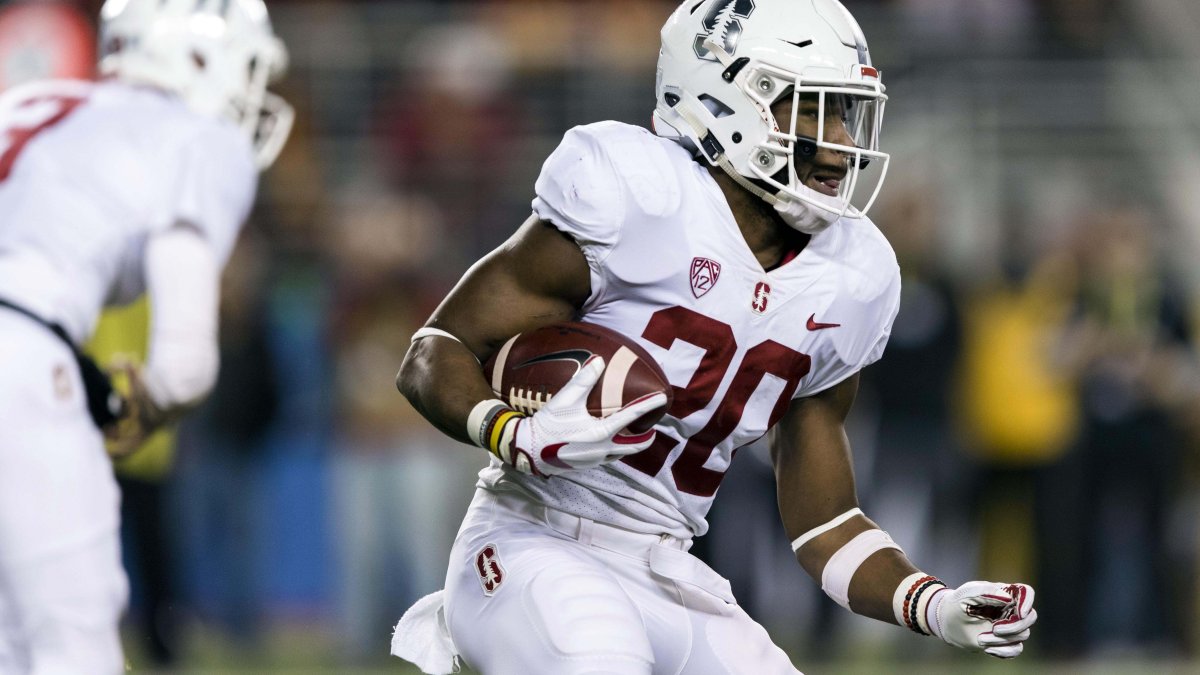


 © 2025 PFF - all rights reserved.
© 2025 PFF - all rights reserved.